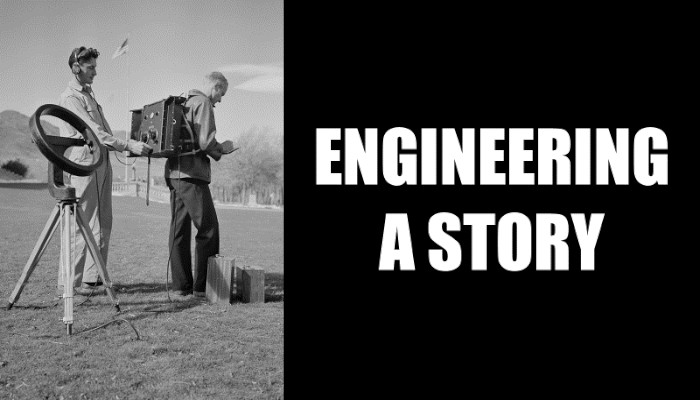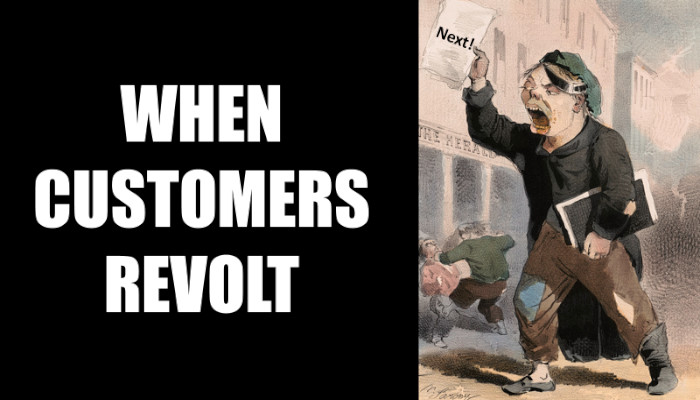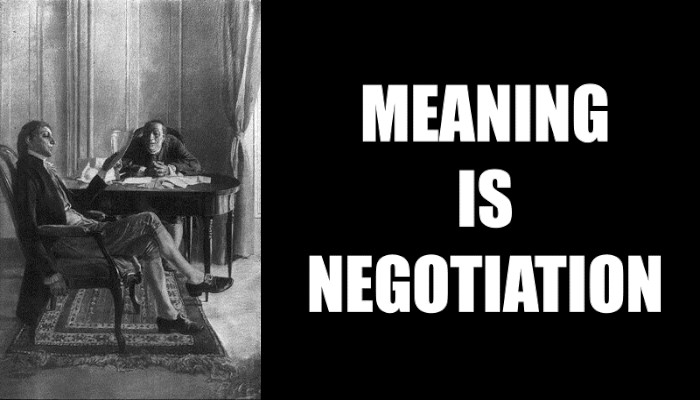by Ron Ploof | Feb 2, 2020 | Storytelling

“You know, Ron,” one of my friends said recently, “You breakdown story like an engineer.”
While I’d never really thought about it that way before, she’s right. Story is a massively complicated subject that I’ve approached by using the skills that I learned in engineering school.

I was a sophomore engineering student at Merrimack College when the professor stopped in the middle of his Digital Signal Processing lecture and dropped a non sequitur. “Why are you here?”
The students just stared at him.
“Why do you want to be an engineer?” Dr. Develis pressed. “Why did you choose a major with such rigor?”
We still had nuthin‘.
He smiled and decided then let us off the hook. “You’re here to learn just one thing.”
We laughed. Surely, he couldn’t be serious. We had to learn mathematics, physics, circuit theory, and control systems. We’d be taking classes in linear algebra, calculus, differential equations, and electromagnetics–not to mention the religion and philosophy courses required to graduate from an Augustinian school.
He dismissed our protests. “Your four years in Engineering school will teach you one thing: a method to solve problems. You’ll learn how to break big problems into small ones. Then, by solving the small problems, you’ll eventually solve the big ones.”
As we pondered that thought, he then made a disturbing prediction. “And you’ll get so good at it, that some people will hate you for it.”

Although I didn’t believe him at the time, life has proved his grim prophecy to be true. It tends to happen while working on big problems with someone who wants to solve them whole. Unfortunately, all-at-once strategies frequently become a jumbled mess of subjectivity, passion, and emotion–all great things when bringing energy to a problem–but terrible while trying to solve one.
My training forces me to look at problems objectively. First I seek to uncover the root causes to problems. Next I learn as much about them as I can. Finally, I break the big problem into smaller, more manageable ones. The process is ruthlessly sequential and simultaneously infuriating to someone who values action over achievement.
Problem-solving is in my DNA. My work is covered with its fingerprints. For example, The StoryHow™ PitchDeck breaks storytelling into four parts: roles, events, influences, and techniques. The Proverb Effect breaks proverbs down into their base components of function, frame, and finish.
Love me or hate me, I am what I am–a storyteller with a degree in Electrical Engineering.
Photo Credit: United States Office Of War Information, Feininger, Andreas, photographer. Science and research. Mineral prospecting. A ground comparator will reveal the presence of an ore body under the surface of the earth by measuring the total intensity and the plane of polarization of the secondary electro-magnetic field set up by the ore body. These students are using an adjustable coil of copper wire which acts as an electrical transformer, and may be tilted to determine the minimum and maximum intensity of the field. They are conducting an experiment in electronics, taught in the department of geophysics at a famous mining engineering school. They will apply the knowledge they are acquiring to airplane detection and anti-submarine warfare. Colorado School of Mines, Golden, Colorado. Colorado Golden Golden. Jefferson County United States, 1942. Oct. Photograph. https://www.loc.gov/item/2017696228/.
by Ron Ploof | Jan 18, 2020 | Business Storytelling

The presentation began as most do. The presenter began flipping through a series of PowerPoint slides that he’d pulled from the company’s internal marketing database. They contained all the traditional basics, including the dreaded We Are the World opening–ya know–the one that makes your company sound like a Clint Eastwood character in a spaghetti western?
Most of the time, customers sit dutifully through these sycophantic preambles…well, except for this day…when one of the customers decided to add color commentary.
“Yeah, we know that you’re the best. You wouldn’t be here otherwise.”
The presenter smiled and advanced to the next slide that talked about the company’s quality.
“Quality? Well, I sure hope so,” the customer said sarcastically.
The presenter advanced to the next slide that contained platitudes of industry dominance.
“Look, we know that you’re awesome and everyone loves you. Can we move on?” The now-emboldened customer proceeded to bark the word, “NEXT!” with each subsequent self-aggrandizing slide.
I find it astonishing that more than ten years into the Content Marketing movement, marketers haven’t relocated their We are the World sections to the appendices of their presentations. Is the information important? Sure. Purchasing from the industry leader is an important piece of information for a buyer–but only AFTER customers conclude that the product meets their requirements. Putting the bravado-cart before the functional-horse is not only unproductive, it’s disrespectful to audiences who are obviously no longer willing to sit passively.
Take a look at your most recent marketing presentations. Do they contain We are the World sections? If so, would it really hurt to move them to the appendix as backup sides?
Photo Credit: Sarony & Major, Lithographer. One of the news-b’hoys / Lith. of Sarony & Major. New York, 1847. New York: Published by T.W. Strong. Photograph. https://www.loc.gov/item/2003664125/.
by Ron Ploof | Jan 5, 2020 | Business Storytelling, Linguitics

Have you ever stated your case so clearly that you knew with certainty that you nailed it? And while you were celebrating your superior communication achievement, have you ever found yourself standing in front of someone who just didn’t get it…at all? If so, you’ve probably fallen victim to a metaphorical mismatch.
Humans use metaphor–the ability to define one thing in terms of something totally different–to understand complex ideas. Essentially, we build upon the concepts learned through the human condition.
Think about the concept of time. Everyone knows what time is because we experienced it everyday. However, if I pressed you to define it, I bet you’d struggle. Exactly how does one describe something we can’t see, hear, smell, touch, or taste?
That’s where metaphor comes in. Rather than describing time directly, we represent it metaphorically through the various ways it affects our lives. For example, we know that time has:
- Inevitability: There’s nothing that we can do to stop it
- Motion: Time moves from the past, through the present, and into the future
- Direction: We can look back in time to see where we’ve been and forward to predict where we’ll be
- Duration: We’re accustomed to waiting for a process to finish
- Distance: We describe long time durations in terms of distance, such as looking far into the future or way back in the past
- Physical effect: We are born young and small, then grow up to become big and old
- Value: We know that our time is limited, and therefore is a precious commodity. We’re even paid for our time.
Try finding a few of your own.
The concept of time is so deep, it’s highly likely that all metaphorical references won’t be shared among all people. For example, an old person with less time in front of them may disagree with the statement that “There will be plenty of time to do X, Y, or Z.” . Or, no matter how much truth contained in “Don’t worry, things will get better with time,” someone who’s just suffered a tremendous loss won’t react well to the statement.
If your audience doesn’t believe in the metaphorical bricks that you have built your premise upon, your idea will not only be dead on arrival, but your ability to share your concept will suffer a setback. Consider the worldviews of our example old and young people. By definition, the former has more life experience than the latter, yet many of those life experiences don’t align. While the older person has lived through their twenties, they didn’t live through the twenties in this century. Thus, by choosing to communicate using 20th-century metaphors on 21st-century belief systems risks instant slap-backs, as in with the trendy “Okay, Boomer.”
Metaphor is a negotiation because it requires speakers to understand the worldview of their listeners before stating a case. Without understanding your listener’s metaphorical belief structure, it’s easy to step into a hornets nest of misinterpretation.
The conveyance of meaning is fickle because we each interpret information differently. Your goal as a communicator is to find the best metaphor through testing and conversation. If you can find a similar–not necessarily identical–life experience to build your complex concept upon, you’ll have found a successful frame of reference to base your argument.
Photo Credit: Benjamin Franklin and Richard Oswald discussing the Treaty of Peace Paris. , 1898. Photograph. https://www.loc.gov/item/2004674949/.

![]()
![]()

